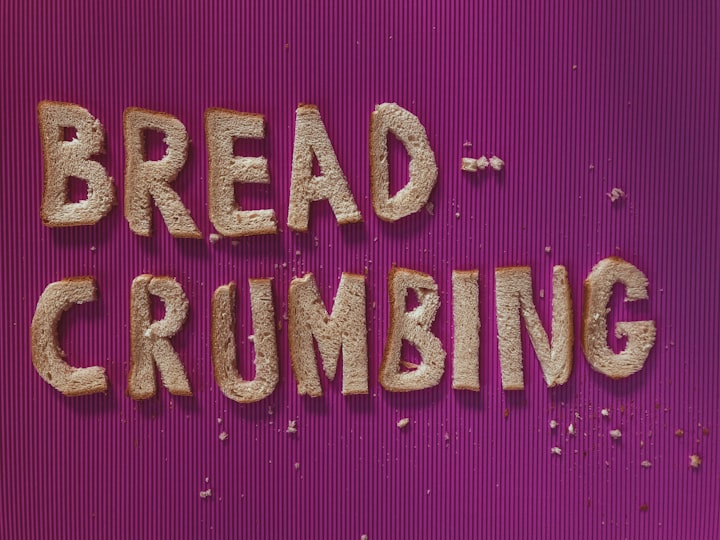
Breadcrumbing, an emerging trend in modern communication, has left many confused, hurt, and craving more. This subtle practice involves stringing someone along with small nuggets of communication, never fully committing to a relationship. Today, those crumbs of communication tend to occur online.
A person may respond to an Instagram story, like a Facebook photo, or text a funny meme. They may text back and forth periodically but never seem to agree to plans in person-the connection stalls, unable to evolve into a fulfilling relationship.
The ambiguity of breadcrumbing can be emotionally exhausting for those on the receiving end. Maintaining hope that the relationship will progress, a breadcrumbee may struggle to realize what's happening or end the relationship.
Although breadcrumbing typically refers to romantic relationships, it can also occur in other personal and professional relationships.
The Numbers Behind Breadcrumbing
A recent Society for the Study of Human Behavior (SSHB) study found that 62% of participants aged 18–35 had experienced breadcrumbing. Of those, 52% were women, and 48% were men. The data suggest that breadcrumbing is a pervasive issue, affecting a significant portion of the population.
The study also revealed that 45% of participants admitted to having breadcrumbing someone else. Interestingly, 68% reported feeling guilty or regretful about their actions. This demonstrates the complexity of breadcrumbing - both as a behavior and an emotional experience.
Why Breadcrumbing Happens
Experts suggest that breadcrumbing may be a product of the digital age. The abundance of communication channels and the ease with which people can connect have created an environment where casual, non-committal interactions are commonplace. In this context, breadcrumbing can become a manageable, low-risk way to maintain multiple connections or keep one's options open.
Another factor contributing to the prevalence of breadcrumbing is the fear of rejection or commitment. For some, breadcrumbing provides a way to avoid the vulnerability of entirely investing in a relationship. By maintaining a certain level of detachment, they protect themselves from the potential pain of rejection.
The Impact of Breadcrumbing
Breadcrumbing can have detrimental effects on a person's mental health and well-being. According to Dr. Lucy Brown, a clinical psychologist, breadcrumbing can lead to confusion, low self-esteem, and anxiety in the breadcrumbee. "The mixed signals and lack of consistency can leave the person on the receiving end feeling constantly unsure of where they stand," she explains.
The SSHB study also found that 72% of participants who had experienced breadcrumbing reported feeling emotionally drained or frustrated. In addition, more than half of those surveyed felt hopeless in forming a meaningful connection.
Breaking the Cycle
If you suspect that you're being breadcrumbed, it's essential to prioritize your well-being. Again, communication is critical; openly discussing your feelings and concerns with the person involved can provide clarity and help you make an informed decision about the relationship.
Dr. Brown recommends establishing boundaries and being mindful of how much energy you're investing in the connection. "If you find yourself constantly checking your phone for messages or agonizing over the lack of response, it might be time to step back and reevaluate," she advises.
In some cases, ending the relationship may be the best course of action. While this can be difficult, prioritizing your mental health and emotional well-being is crucial.
Breadcrumbing has become an unfortunate byproduct of our increasingly digital and interconnected world. It's a practice that leaves many confused, hurt, and struggling to find meaningful connections. As breadcrumbing continues to pervade modern relationships, it's essential to recognize the signs, prioritize self-care, and establish healthy boundaries.
Understanding the phenomenon and its impact can help those affected by breadcrumbing to navigate these complex situations and protect their emotional well-being. For those who may be breadcrumbing others, recognizing the potential harm caused by such behavior is crucial. By fostering open communication, empathy, and self-awareness, we can work towards building healthier and more fulfilling relationships in our digital age.
In conclusion, breadcrumbing is a challenge many face in modern digital communication. However, by acknowledging its prevalence and the emotional toll it can take, we can better equip ourselves to handle breadcrumbing situations, prioritize our well-being, and seek out more meaningful connections in our personal and professional lives.
About the Creator
Edy Zoo
Edy Zoo is an author who writes about social subjects. He contributes to the ever-growing library of social critics.






Comments
There are no comments for this story
Be the first to respond and start the conversation.